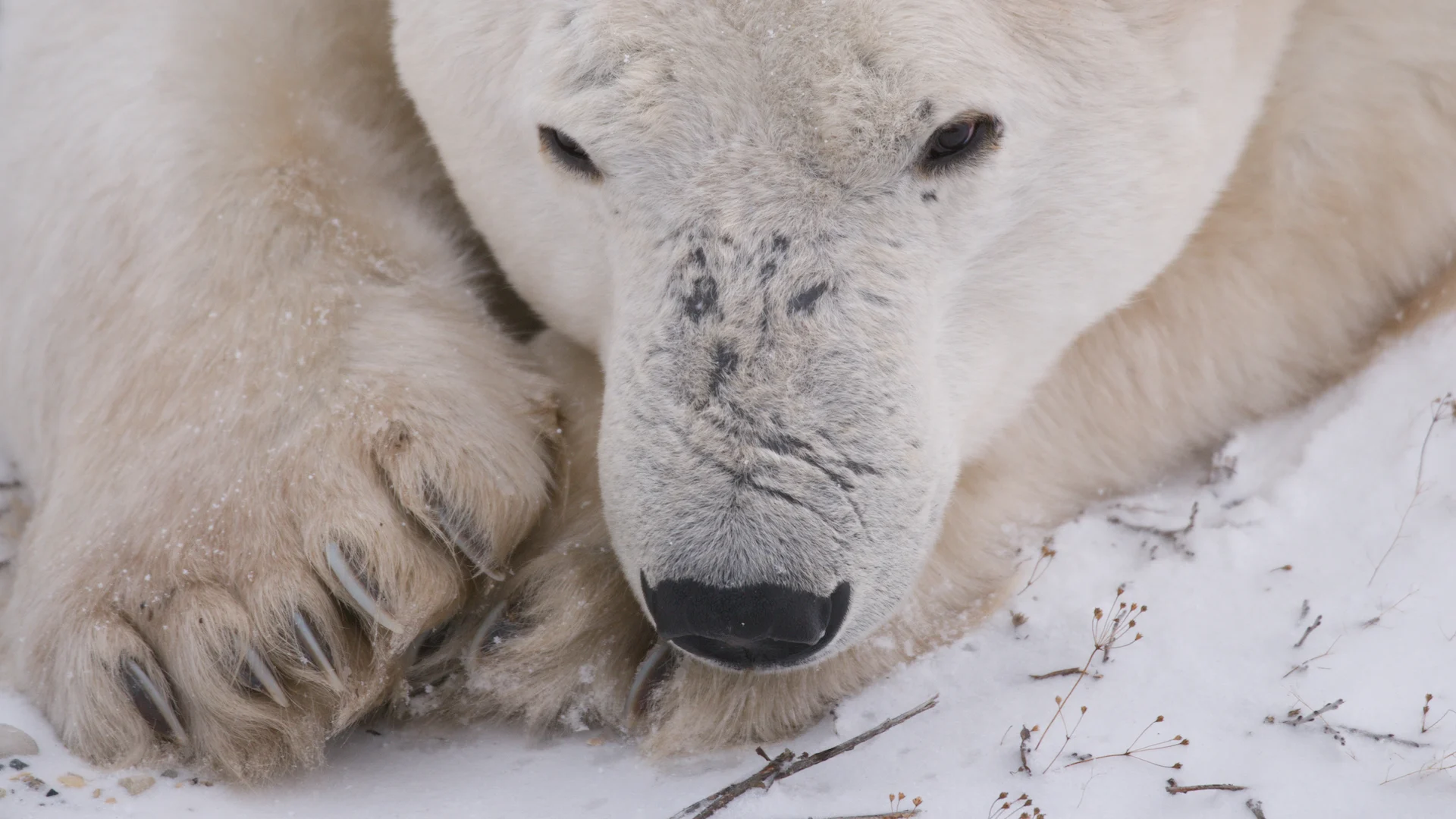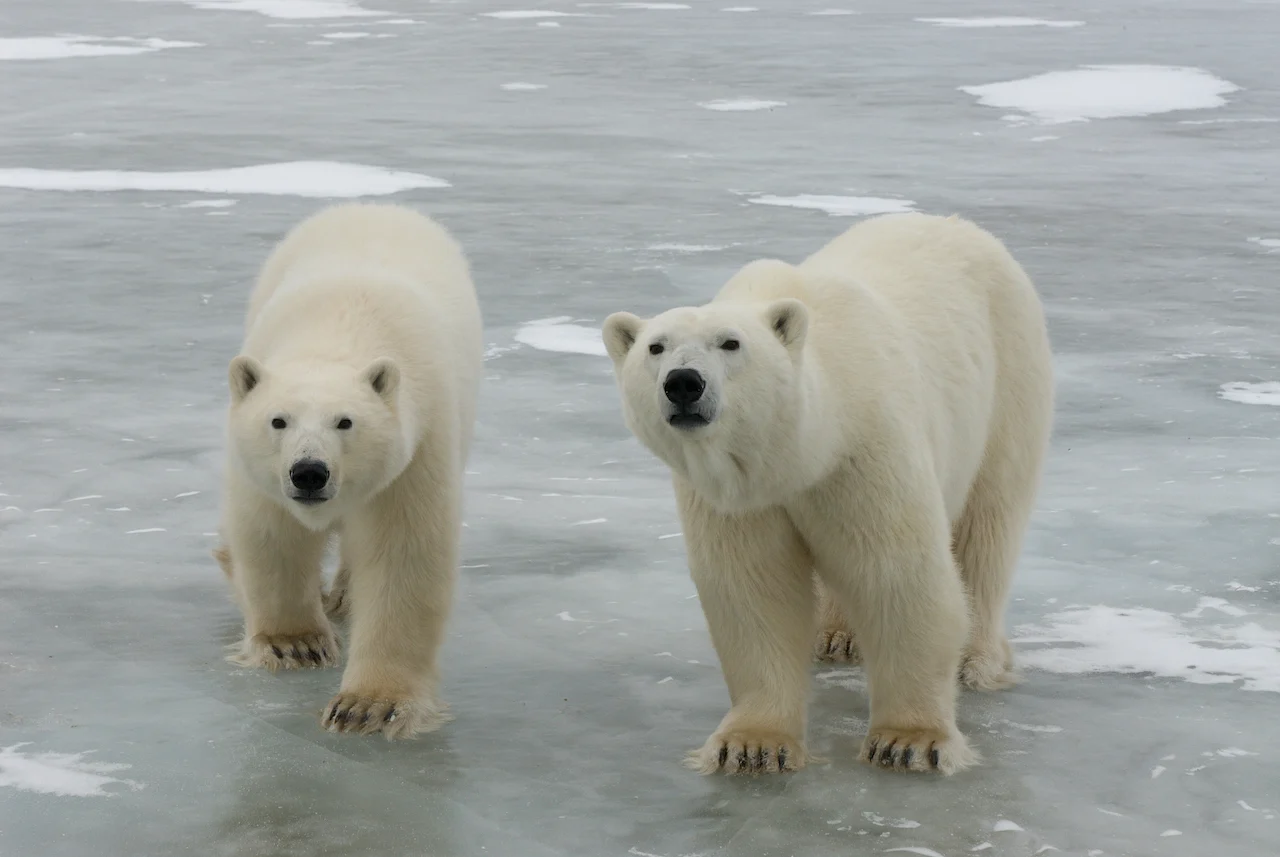
New study points to more polar bear troubles from climate change
The study indicates the injuries appear to be an 'unexpected consequence of climate change' as conditions continue to change in a warming Arctic.
It's no secret that polar bears in the Arctic are suffering as a result of changing conditions due to climate change, but a new study has discovered they are hurting in more ways than previously believed.
For the first observed time, ice buildup and injuries to the feet of polar bears have been documented in parts of the northern Arctic. The afflictions are believed to be a result of the changing sea ice conditions in the warming region, according to the recently released study published in the journal, Ecology.
SEE ALSO: 'Bear-dar' uses AI to protect communities and polar bears
Led by researchers at the University of Washington (UW), lacerations, hair loss, ice buildup and skin ulcerations mainly affecting the feet of adult bears, as well as other body parts, were found while examining the health of two specific populations of the animal.
Two bears had ice blocks up to 30 centimetres in diameter stuck to their foot pads, resulting in deep, bleeding lacerations that made walking difficult, according to the authors of the study.

(B.J. Kirschhoffer/Polar Bear International/Submitted to The Weather Network)
The research was released shortly before the start of Polar Bear Week, held annually to celebrate the Arctic, raise global awareness about polar bears and their changing environment, advance coexistence initiatives, and inspire action for a better future for polar bears and people. This year's Polar Bear Week occurs from Oct. 27 until Nov. 2.
“In addition to the anticipated responses to climate change for polar bears, there are going to be other, unexpected responses,” said Kristin Laidre, lead author, senior principal scientist at the UW Applied Physics Laboratory and a professor in the UW School of Aquatic and Fishery sciences, in a news release. “As strange as it sounds, with climate warming, there are more frequent, freeze-thaw cycles with more wet snow, and this leads to ice buildup on polar bears’ paws."
Numerous ways the injuries are occurring
John Whiteman, a chief research scientist at Polar Bears International (PBI) and assistant professor at Old Dominion University, told The Weather Network by email the injuries could be arising in several ways, comparing them to the wounds dog owners see in cold climates.
"Snow [becomes] caught in the fur on a dog’s foot, melting slightly from body heat or being squeezed as the dog walks, then refreezing into a hard, icy clump. It appears like a similar issue may be occurring with polar bears, but to an extreme degree," said Whiteman. "Alternatively, polar bears may be walking through unusually large areas of slushy, wet snow, allowing icy water to cling to their feet and gradually solidify into ice clumps."

(B.J. Kirschhoffer/Polar Bear International/Submitted to The Weather Network)
Either way, Whiteman said as ice clumps become large, they may eventually tear off, thus pulling fur and damaging skin, or the polar bears may pull them off.
"Polar bears could also be breaking through icy, brittle crusts on top of the snow as they walk. This icy crust could be tearing off hair and causing skin damage as they break through," said Whiteman.
Climate connection to the injuries
Ice clumps are a "surprising problem" for polar bears, Whiteman said, as they have evolved to be at home in the Arctic, including frequent swims, even in very cold weather.
However, the Arctic is one of the fastest-warming regions of the planet, and periods of unusual warmth are increasingly common, he added.
"Such periods could encourage relatively warm sea water to seep into the snow on top of the sea ice, or precipitation to fall as rain rather than snow. This could set the stage for polar bears to find themselves in large areas of unusual, slushy conditions, or to be walking across snow that is newly crusted over with frozen rain," said Whiteman.

(B.J. Kirschhoffer/Polar Bear International/Submitted to The Weather Network)
The worst effect of our warming climate for polar bears is that it is melting their sea ice, the chief PBI research scientist said, making it harder for them to hunt seals.
"The loss of that nutritional input can lead to all kinds of problems, eventually affecting their ability to survive and reproduce," said Whiteman.
Because the study is the first account of the injury types, we can only speculate about the link to warming temperatures, Whiteman added.
"But it is probable that unusually slushy or crusty snow conditions are causing these injuries, and probable that those conditions are more common because of warmer temperatures," said Whiteman.
WATCH: Polar bear radar using AI to keep Churchill residents safe
Polar bears are 'robust' animals, but they are affected by the wounds
The study's authors have noted that some of the wounds the bears suffered would be hard to heal on their own, and mentioned that several of the animals had lame gaits.
"Polar bears are robust animals. But the pictures in this study speak for themselves. The ice clumps and tissue damage on the feet look like they could limit movement and challenge the bears," said Whiteman.
While news of the afflictions is troubling for the Arctic populations, Whiteman hasn't observed those types of injuries around Churchill, Man., yet.
"This is certainly something worth keeping an eye out for, especially in places where many bears can be seen. However, thus far, these injuries have only been reported from a specific region," said Whiteman.
WATCH: Can polar bears fight off climate change by eating reindeer?
Thumbnail courtesy of B.J. Kirschhoffer/Polar Bears International.
Follow Nathan Howes on X, formerly known as Twitter.











